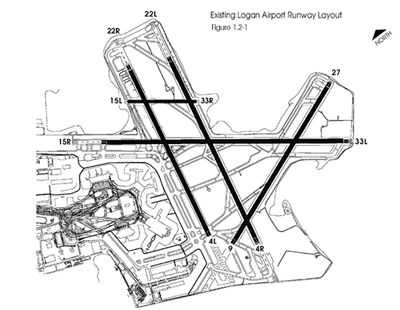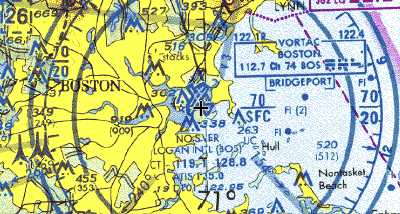Boston's Mayor Not Pleased
The FAA issued its final approval Thursday for a controversial
9,300-foot taxiway to be constructed at Logan International
Airport, for a project designed to reduce collision potential,
minimize travel delays, and diminish ground noise.

The taxiway, expected to cost around $55 million, will require
about two years worth of construction. It was one of the major
safety recommendations after an eruption of near-collisions and
other incidents at BOS in 2004 and 2005.
During that period, BOS had the most such incidents of any other
airport in the nation. The closest close-call occurred on June 9,
2005, when two jets carrying a 448 passengers and crew came within
106 vertical feet of each other after being allowed to take off on
intersecting runways.
As reported by ANN, the
centerfield taxiway is considered an important element in making
Logan a safer airport. It would reduce the chance of conflicts
between taxiing aircraft and aircraft operating on the runway.
Proponents also say a centerfield taxiway would allow aircraft to
taxi to the runway or to the gate more efficiently.
The proposed centerfield taxiway is included in the list of
airfield actions to improve Boston Logan's efficiency and was
studied extensively in the Boston-Logan Airside Improvements
Planning EIS/EIR (1995 to 2002).
Even though the new taxiway will allow aircraft to cross runways
at more locations, having several planes cross runways at the same
time will be safer than conducting the crossings at the same
location, which takes more time, aviation officials told the Boston
Globe.
The current runway layout forces aircraft waiting to take off on
22R or 22L to wait, single file, on the taxiway along the airport's
northwest side. The center-field taxiway will allow larger or late
aircraft to bypass the line and go directly to 22L.
Boston Mayor Thomas M. Menino isn't so enthusiastic about the
agency's approval. He contends the public did not get sufficient
opportunity to voice their opinions, although the original public
comment period was extended by the FAA, and local communities will
suffer.
"I continue to be extremely frustrated and adamantly opposed to
the construction of a center-field taxiway," said a statement from
the mayor. "The FAA should immediately stop the process and allow
public health agencies to look at responses to the potential health
issues raised during this process."
East Boston and Winthrop opponents managed to delay the approval
last year with complaints of increased noise by idling planes that
the new taxiway would bring closer to their neighborhoods. But now,
it appears a lawsuit is their last alternative to stop the
project.
"We're trying to do whatever we can do, but it seems to be a
difficult process," said Ronald H. Hardaway, an East Boston
resident who has served on the airport's Citizens Advisory
Committee. "Property values are going to go down, and a lot of good
people are probably going to leave because of this... We can
appreciate a good airport ... but stuffing that new taxiway in
there is just too much."
The Massachusetts Port Authority, which operates BOS, has plans
to conduct an air quality study that will analyze air quality
before and after the taxiway is completed at a cost of $1.5
million.
An NTSB report issued April 12 regarding a June 2005
near-collision that said a controller" forgot" permission had been
given to an aircraft for take off and then allowed another plane on
an intersecting runway to take off.
The FAA categorized the incident as one of the most serious
near-collisions on record, where "separation decreases to the point
that participants take extreme action to narrowly avoid a
collision, or the event results in a collision."
According to the report, the controller "stated he was very busy
coordinating with airplanes and other controllers at the time of
the incident." Logan tower procedures have reportedly been change
to avoid similar situations.

Eighty percent of the total cost of the new taxiway is expected
from the government, with Massport paying 20 percent.
BOS officials estimate ground delays will be decreased by 10,000
hours a year, or as much as 22 percent. Logan currently ranks as
the nation's 17th busiest airport with about 1,250 daily
departures.
 ANN's Daily Aero-Linx (04.15.24)
ANN's Daily Aero-Linx (04.15.24) Classic Aero-TV: 'No Other Options' -- The Israeli Air Force's Danny Shapira
Classic Aero-TV: 'No Other Options' -- The Israeli Air Force's Danny Shapira Aero-News: Quote of the Day (04.15.24)
Aero-News: Quote of the Day (04.15.24) Airborne 04.16.24: RV Update, Affordable Flying Expo, Diamond Lil
Airborne 04.16.24: RV Update, Affordable Flying Expo, Diamond Lil ANN's Daily Aero-Term (04.16.24): Chart Supplement US
ANN's Daily Aero-Term (04.16.24): Chart Supplement US




